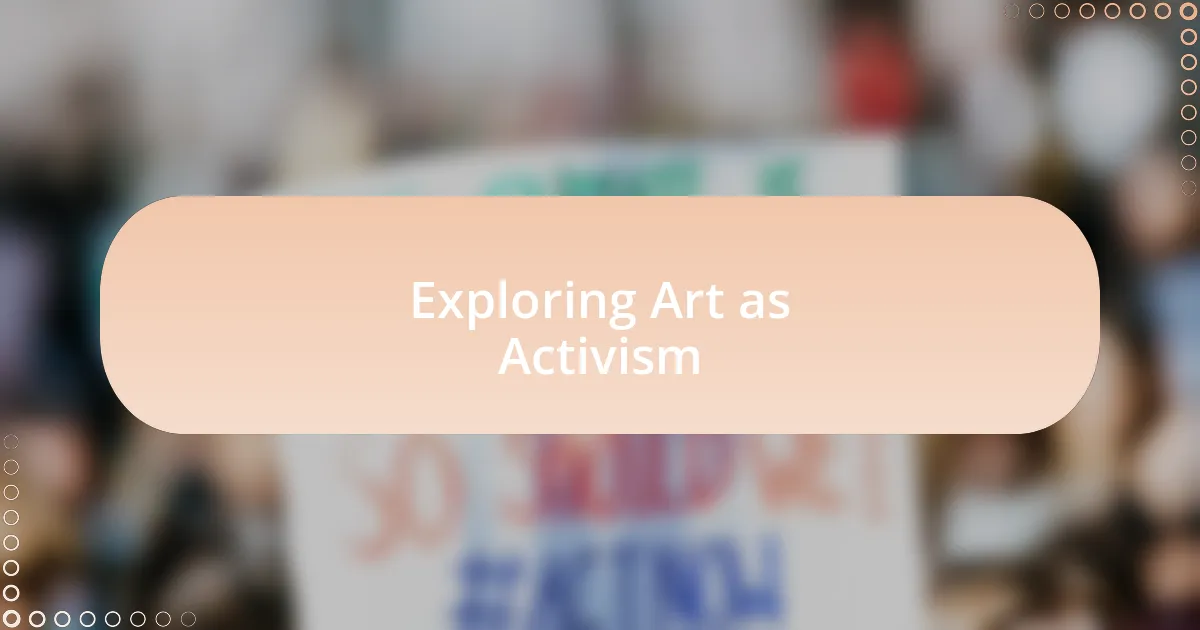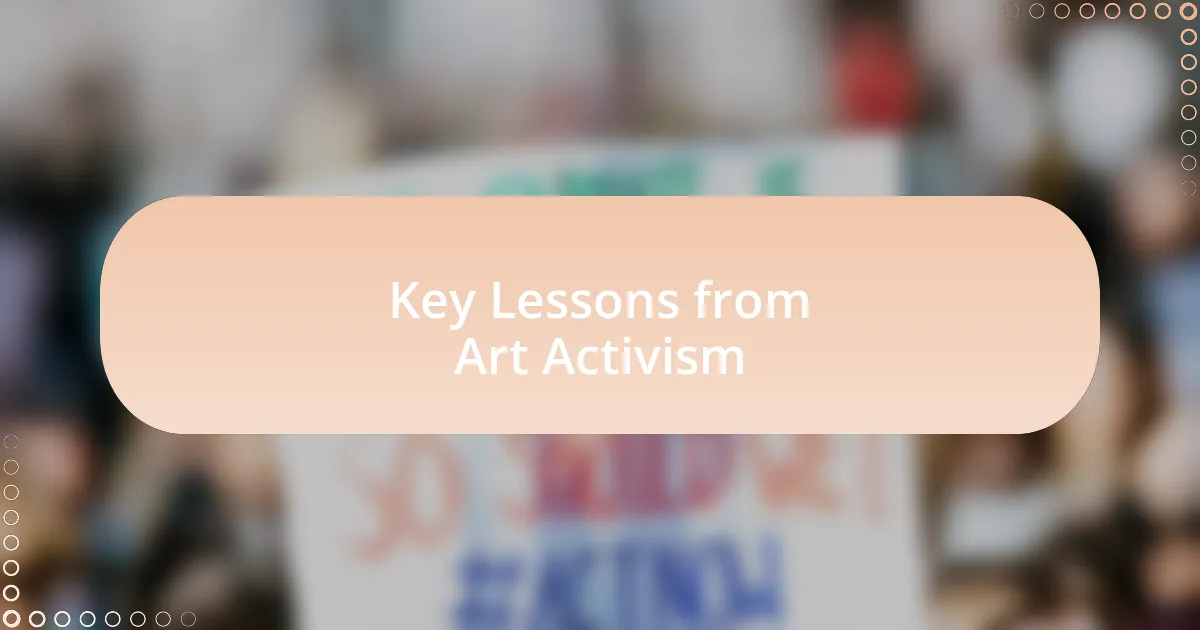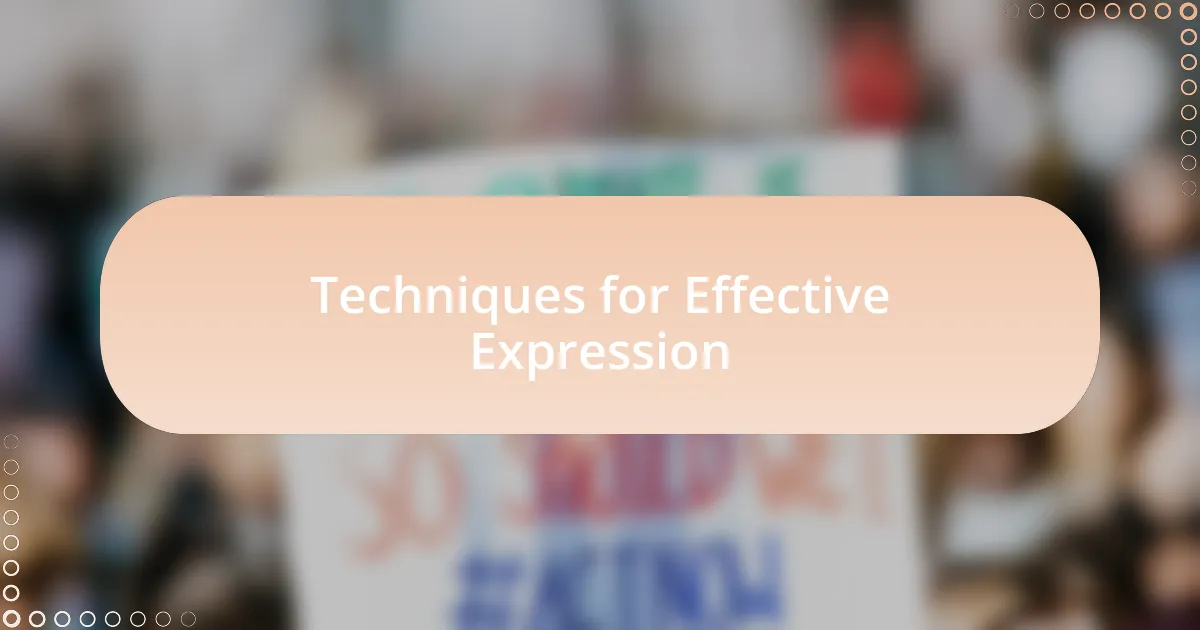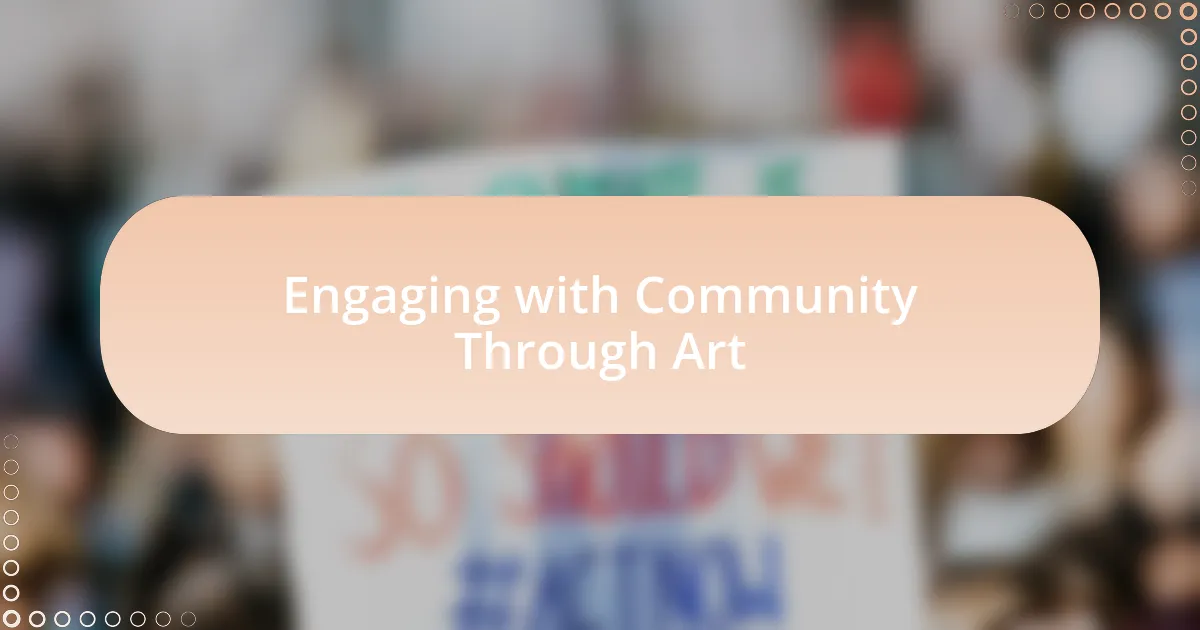Key takeaways:
- Anti-war activism challenges glorified war narratives and highlights the collective pain and hope of those impacted by violence.
- Art serves as a powerful tool for activism, fostering empathy and reflection on the human costs of conflict.
- Collaboration in art activism amplifies marginalized voices and can inspire community dialogue and engagement.
- Personal narratives and emotional resonance in art enrich understanding and foster connections that promote peace.

Understanding Anti-war Activism
Anti-war activism is a powerful movement seeking to challenge the narratives that glorify conflict and war. I remember the first time I attended a rally; the palpable energy of individuals united by a common purpose truly struck me. It made me reflect—how often do we allow ourselves to be swept up in the rhetoric of war without questioning its cost?
The emotional weight of anti-war activism often comes from the stories of those directly impacted by violence. For instance, I met a veteran at a workshop whose experiences shattered my preconceived notions of heroism. Listening to him share tales of loss made me wonder: what sacrifices are truly being honored when we celebrate war?
Ultimately, understanding anti-war activism involves recognizing the collective pain and hope that unites diverse voices. I’ve often felt a deep connection to others who share this journey. How can we not feel empathy when faced with the reality of lives lost, families torn apart, and communities displaced? Engaging in this dialogue not only enriches our understanding but also strengthens our resolve to advocate for peace.

Exploring Art as Activism
Art has a unique ability to transcend barriers, making it an extraordinary tool for activism. I recall a moment at an art activism workshop where a muralist spoke about using his art to depict the horrors of war. His vivid imagery made me feel as if I were experiencing those moments firsthand, prompting me to ask: how can art serve as a mirror reflecting society’s injustices?
In creating pieces that illustrate the human cost of conflict, artists inspire empathy and understanding. I’ve experienced this firsthand; during a collaborative project, we painted a canvas that represented the loss of innocent lives. The emotional weight of that creation lingered with me long after the session ended, leading me to ponder: could our collective expression change minds about war?
Exploring art as activism reveals layers of connection we often overlook. It invites dialogue and shared experience, allowing us to engage with the topic of war in a more profound way. I remember discussing a performance piece that vividly portrayed personal stories from those affected by violence—each narrative layered into a haunting performance. It left me wondering: if we can feel the pain of others, can we also spark real change?

Key Lessons from Art Activism
Art activism teaches us that creativity can amplify marginalized voices, shedding light on stories often ignored by mainstream narratives. I remember one workshop where we collectively created a digital collage of protest visuals. This process opened my eyes to the sheer power of collaboration—how combining different artistic styles can give a louder, unified voice to our shared messages.
One key lesson I learned is the importance of vulnerability in artistic expression. During a reflective session, participants were encouraged to share personal experiences related to the impact of war. Listening to those stories brought tears to my eyes and reminded me that art can transform pain into purpose. Isn’t it remarkable how sharing our struggles can unite us in unexpected ways?
I also discovered that art can be a catalyst for action. I participated in a project that culminated in an exhibition aimed at raising awareness about local anti-war initiatives. The feedback we received from viewers was astounding! People left feeling inspired to engage in dialogue or take part in activism themselves. How could this one experience ripple out into a broader community, sparking change beyond our immediate circle?

Techniques for Effective Expression
Techniques for effective expression in art activism often hinge on tapping into emotions that resonate deeply with audiences. I remember experimenting with mixed media during a workshop, where we combined photography and poetry. This fusion allowed me to explore the visceral impact of war through both visual and written art, creating a more profound connection with viewers. It’s fascinating how different mediums can evoke varied emotional responses—have you ever felt a text resonate more when paired with a striking image?
Another technique I’ve found beneficial is employing symbolism to communicate complex ideas. In one session, we painted murals that incorporated symbols of peace intertwined with imagery of conflict. By using familiar symbols, we could engage the community on a deeper level, prompting them to rethink the narratives they often accept. Isn’t it powerful how a single image can spark conversations and stir feelings in ways that words sometimes cannot?
Lastly, the role of storytelling in art cannot be overstated. During a group exercise, we each narrated our individual experiences related to anti-war sentiments, then incorporated those stories into our artworks. I was amazed at how personal narratives enriched the pieces we created, turning them into compelling tools for advocacy. Have you ever experienced the impact of a story that not only mirrors your own but also transforms your outlook?

Engaging with Community Through Art
Engaging with community through art opens up a channel for dialogue that transcends traditional communication. I remember leading a community mural project, where participants of all backgrounds came together to create a large piece reflecting our shared hopes for peace. This experience was exhilarating; as brushes touched the canvas, stories unfolded. Isn’t it amazing how the act of creating together can spark connections that we might not find through conversation alone?
In one workshop, we hosted an open forum in conjunction with a live art demonstration. While artists painted, community members shared their thoughts and feelings about war and peace. This reciprocal engagement turned art into a living dialogue, where each stroke of the brush echoed the sentiments in the room. Doesn’t it feel powerful to witness how creativity can foster understanding and empathy among people who may have different views?
Art can stimulate community involvement in ways that are both enlightening and transformative. I saw this firsthand when we organized a showcase of local artists whose works addressed the realities of war. As attendees discussed the pieces, I felt the air thick with emotion, a palpable sense of solidarity emerged. Have you ever felt that rush when a collective experience unites voices and visions for a more peaceful future?

Personal Reflections on Activism Experiences
Reflecting on my activism experiences, I find that each workshop has left an indelible mark on my understanding of community and conflict. I vividly recall a session where a participant shared a deeply personal story about losing a loved one to violence. It was heart-wrenching, yet it illuminated the urgent need for peace. How often do we overlook these personal narratives in the face of larger political discussions?
During another workshop, I facilitated a discussion centered around the themes of resilience and hope. I was struck by how people’s artworks reflected their journeys — there was pain, yes, but also incredible strength. This juxtaposition moved me profoundly. Isn’t it fascinating how creativity serves as a catharsis for emotions that are often too difficult to express in words?
In my own journey, the most rewarding moments have emerged from witnessing the powerful synergy between art and activism. I once collaborated with an artist who transformed discarded materials into beautiful pieces that symbolized rebirth. It struck me how art can redefine narratives and inspire collective action. Have you ever experienced that shift in perspective when something mundane becomes a catalyst for change?